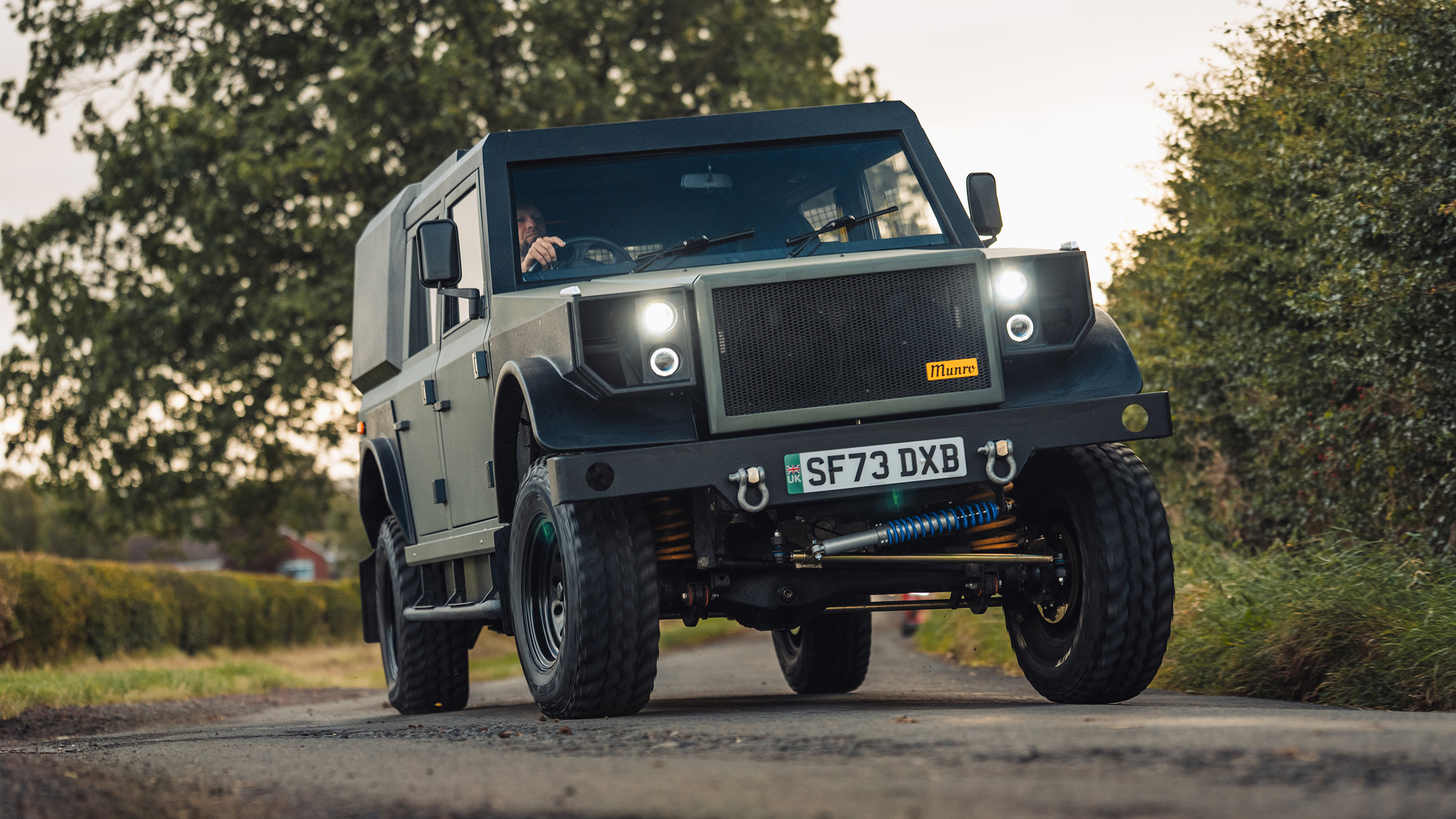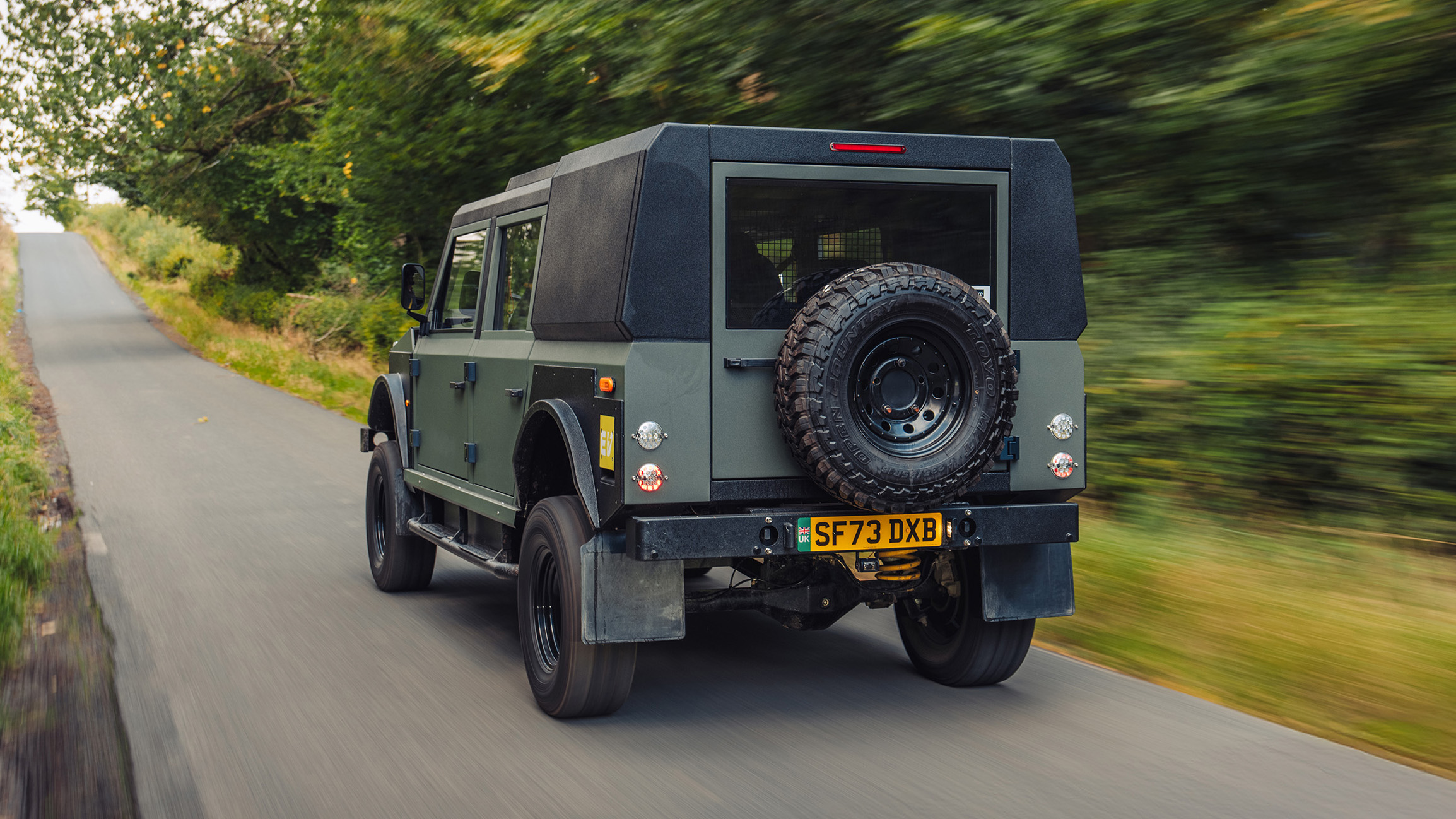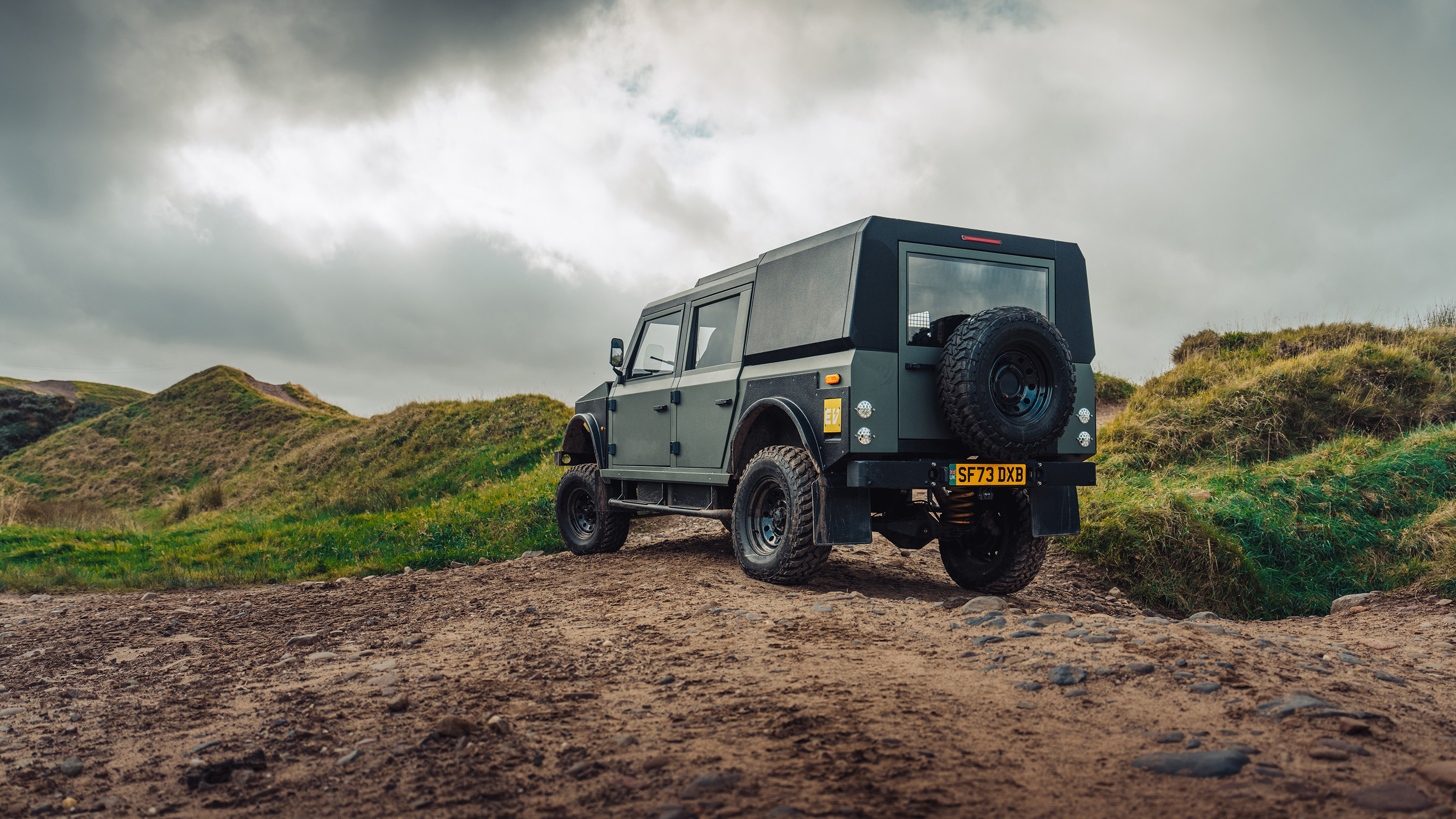
Munro M280 review: ugly, utilitarian... and utterly lovely
What is it?
It’s a Scottish combine harvester. Or a bulldozer from north of the border. Or an all-electric off-roader designed to be used in some of the harshest applications in the automotive sphere that… just happens to be made near Glasgow. Actually, it’s all of those things. Which probably warrants at least some sort of explanation.
Go on.
Right, so Munro is a start-up that makes the all-electric M280 and M170. They’re single-motored EVs with the tried and tested underpinnings of a much more prosaic vehicle; think beam axles, coils, a triplet of diff locks and a low ‘box transfer case. They’re simplified and pared-back inside and out, delivered in whatever body style you need to complete a job (truck, trayback half-cab, bare chassis with cab). They also look like they were designed by someone for whom Gore-Tex is considered a luxury fabric and a hard hat isn’t a fashion accessory.
Photography: Mark Riccioni
But there’s method to the aesthetic simplicity. Tooling is much less of an issue when you’re building a car exclusively out of lightly bent metal, fixing it is easier and it’s stronger. Ditto the drivetrain; all of the Munro’s bits are well understood and easy to fix on-site, simplified and accessible. That matters, because the vehicles aren’t really meant for the urban SUV crowd, or the pseud’s corner that is the butch look of the inter-city overlander.
So who are they for?
They’re for forestry, mines, power access, agriculture, mountain rescue and military applications. And they’re to be treated more like the aforementioned bulldozer or piece of plant equipment; invest in a Munro and it’s supposed to last 20 years rather than the more usual five. Which is why they sound expensive. The idea is you buy this eighty grand piece of equipment once, rather than four forty grand pickups which are paté after half a decade in most ‘proper’ work environments. Hours on the unit rather than miles, an investable item rather than a disposable one.
Where has it come from?
Munro is basically a start-up that was originally looking at electrifying older Land Rovers as a lifestyle option. It soon became clear that there’s a demand in industry for something a bit more rugged and simplified than the current offerings, but with an electric drivetrain – companies keen to lower their CO2 burden with a buyable fix.
Such a vehicle doesn’t really exist any more; even the most basic of pickups come with CAN-bussed electronics and big screens, electronically controlled suspension and the like. Munro recognised that gap in the market and designed a car to fill it. It’s been a success so far, with millions of pounds’ worth of investment and orders - and the big hitters haven’t really come out to play yet. And yes, you can buy one privately, but you’d need to be aware of what you’re buying - this isn’t a Scottish G-Wagen.
So that’s why it’s a weird blend of old and new?
Exactly. The idea is that you get the good bits of electricity – power and torque, simplicity, low running costs and lack of localised emissions, lack of noise etc – but also the rugged and patchable/well understood benefits of old-school suspension. You could fix this with some basic tools and knowledge and not need a PHD in coding.
The battery sits in three parts inside the ladder-frame chassis and you can replace the silos easily enough should they get damaged or degrade. Plus, you can fix and service Munros on-site and it doesn’t invalidate the warranty as long as it’s done properly and checked by a Munro approved person every year. They’re a tool, not a lifestyle vehicle.
What’s it like to drive?
Quite pleasant, if rudimentary. Push-button gear selection, a lever for low range, stop and go pedals. That’s about as simple as it gets. You can option three locking diffs, there are electric windows and heated seats and yes, even a small screen for nav/Bluetooth/CarPlay, but it’s all straight lines and raptor paint (which also features on the outside, for extra protection). It’s all water- and dustproof and can literally be hosed out and left to air dry.
Top Gear
Newsletter
Thank you for subscribing to our newsletter. Look out for your regular round-up of news, reviews and offers in your inbox.
Get all the latest news, reviews and exclusives, direct to your inbox.
Dynamically it’s comfortable and quiet – though there are quite a few rustles from the outside at speed – very soft in the suspension and notably geared for off-road rather than on. But for getting between job sites, you’d be well cared for. Just don’t attempt any late braking heroics into a roundabout, drive like you would a recent classic, and you’ll be fine. There’s something undoubtedly Series Land Rover in the make-up, but that’s not a problem. There’s also something delightful about its lack of pretension. We particularly liked the transmission tunnel saddlebags for oddment stowage – why doesn’t every car have them?
How about off-road?
That’s where the Munro really comes into its own. It’s very simple to operate, and largely bombproof. We waded it over the bonnet, ran it up steep mud hills, cross-axled it on big ruts. And even though our demo car didn’t have the optional extra diff locks, it conquered very nearly everything. We did manage to beach it once, but only bigger tyres and more height would have possibly saved it – things it can have. The torque from the EV motor would be fine with a set of 37in tyres. But it’s easy and supremely competent - a car that you’re not afraid to beat up and use properly. Even the founder mentioned that a Munro looks better covered in mud and with a few war wounds.
It’ll also happily charge on a normal EV charger at 130kW DC or 7kW AC, so it’s just like a normal EV. And you could possibly run a logistics or command post off it when out somewhere.
Viva the Scottish carmaker!
This is the first Scottish car to be produced in about 40 years. Munro was started in 2019, as mentioned, originally with the idea of converting older Land Rovers to electrified power. But the team soon realised that electric isn’t the hard part – it’s the conversion of the base vehicle. So they developed an entirely new product that solved the problems of both the original and the powertrain.
They’ve ended up with a serious bit of kit – albeit a pretty costly one. The more powerful M280 comes in at £82,495 without VAT, the M170 £69,662, again without VAT. So that’s another 20 per cent on those prices if you’re not a business user.
That’s a lot for such a specific requirement.
Yes, it’s challenging. But the requirement is anything but specific. The bit is the absolute clarity of purpose. The M-series wasn’t created to satisfy the SUV crowd. Or even try. Every decision is about utility, ability and competence. Yes, it’s ugly and utilitarian, and yes, it’s probably a bit much if you don’t use the 4x4 ability at least 50 per cent of the time, but there’s something utterly lovely about a vehicle that hits the mission statement. It’s not for everyone, but those that find a use will love it. It’s the kind of vehicle that works for a living and makes no apologies for that. It’s not for showing off, it’s for showing up.
Price: £82,495 (ex-VAT)
Drivetrain: Single-motor, AWD mechanical drivetrain, two-speed transfer case
Battery: 85kWh LFT, 170-mile ‘real world’ range
Charging: 130kW DC (15-80pc in 30 mins), 7kW AC
Power: 375bhp, 516lb ft
Performance: 5.0secs 0-62mph (est), 95mph top speed (est)
Weight: 2,450kg
Featured

Trending this week
- 2026 TopGear.com Awards
The very best cars of the year: welcome to the 2026 TopGear.com Awards






